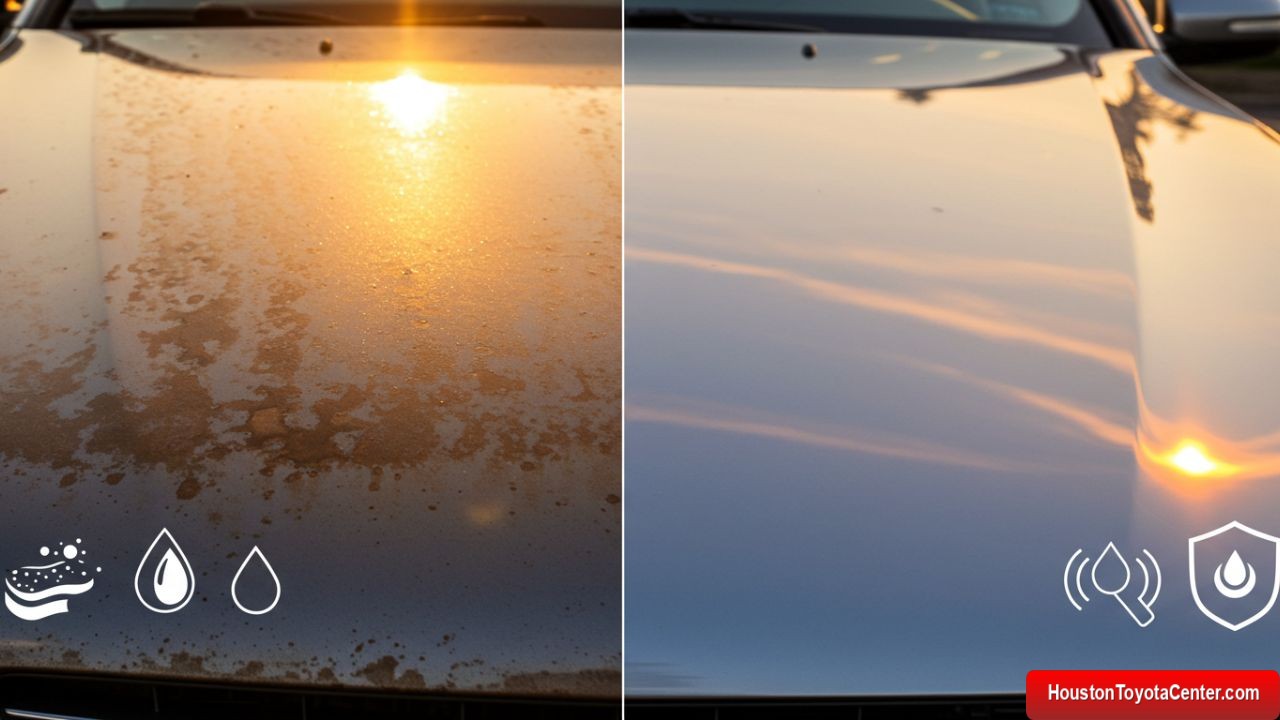Your car’s paint is more than just a protective layer—it’s a statement of pride and a shield against the elements. Yet, many car owners notice their vehicle’s vibrant finish dulling prematurely, even with regular care. Why does this happen? Professional detailers know the hidden culprits behind rapid paint degradation, from environmental factors to overlooked maintenance habits. In this guide, we’ll uncover the science behind paint fading and reveal the trade secrets detailers use to restore and preserve automotive finishes.
1. The Science of Paint Degradation
Automotive paint consists of multiple layers: primer, base coat (color), and clear coat. The outermost layer, the clear coat, is a transparent polymer designed to protect against UV rays, scratches, and contaminants. Over time, this layer breaks down due to:
- UV Radiation : Sunlight’s ultraviolet (UV) rays degrade the polymers in the clear coat, causing oxidation. This process weakens the paint’s molecular structure, leading to dullness and discoloration.
- Thermal Stress : Repeated exposure to extreme heat (e.g., parking in direct sunlight) accelerates oxidation and can cause micro-cracks.
- Chemical Reactions : Acid rain, bird droppings, and industrial pollutants react with the clear coat, eroding its protective properties.
Detailers’ Secret : High-quality ceramic coatings (e.g., SiO₂-based products) create a sacrificial layer that absorbs UV damage and repels contaminants, extending the clear coat’s lifespan by up to 5 years.
2. Environmental Enemies of Car Paint
Even well-maintained cars fall victim to environmental aggressors. Below are the top offenders:
FREE: Quickly identify and understand problems with your vehicle 🚘
CLICK HERE| Factor | Impact | Prevention Tip |
|---|---|---|
| Acid Rain | Etches the clear coat, leaving dull spots. | Rinse the car immediately after exposure. |
| Bird Droppings | Acidic content corrodes paint if left unattended. | Use a neutral pH cleaner for removal. |
| **Salt (Winter Roads) | Accelerates rust and paint peeling. | Wax undercarriage and rinse regularly. |
| Tree Sap/Pollen | Bonds to paint, causing stains and oxidation. | Use clay bars to lift contaminants. |
Case Study : A 2022 study by the International Detailing Association found that cars exposed to coastal salt air faded 40% faster than inland vehicles.
3. The Myth of “Washing” Your Car
Many car owners unknowingly damage their paint through improper washing techniques:
- Harsh Detergents : Dish soap strips away wax and protective layers.
- Automated Car Washes : Stiff brushes and recycled water cause micro-scratches (swirl marks).
- Drying with Towels : Abrasive materials like terry cloth leave scratches.
Detailers’ Secret :
- Use a pH-balanced car shampoo and a microfiber wash mitt .
- Adopt the two-bucket method : one for soapy water, one for rinsing the mitt.
- Dry with a waffle-weave microfiber towel to prevent swirls.
4. The Role of Maintenance Neglect
Paint protection isn’t a one-time task. Skipping these steps speeds up fading:
- Infrequent Waxing : Traditional carnauba wax lasts only 2–3 months. Without reapplication, UV and water damage escalate.
- Ignoring Paint Correction : Oxidation and scratches deepen if not addressed early.
- Poor Storage : Parking under trees or in industrial areas exposes paint to pollutants.
Solution :
- Apply a ceramic coating for long-term protection.
- Schedule annual paint correction to remove oxidation.
- Use a breathable car cover for outdoor storage.
5. The Truth About Paint Quality
Not all paint jobs are created equal. Factory paint (e-coat primer + high-quality base/clear coats) outlasts aftermarket repairs, which may use inferior materials.
Signs of Poor Paint Quality :
- Uneven fading or peeling within 1–2 years.
- Rapid rust formation around chips.
Detailers’ Secret : Invest in OEM (Original Equipment Manufacturer) touch-ups for chips and scratches to maintain consistency.
6. The Power of Paint Protection Film (PPF)
For extreme durability, detailers recommend PPF (a transparent urethane film). It:
- Blocks UV rays, rocks, and scratches.
- Self-heals minor scuffs with heat (e.g., sunlight).
- Lasts 5–10 years with proper care.
7. DIY vs. Professional Detailing
While DIY maintenance is cost-effective, professionals use advanced tools:
| Task | DIY | Professional |
|---|---|---|
| Paint Correction | Polishing with orbital buffers | Dual-action polishers + wet sanding |
| **Coating Application | Spray-on sealants | Multi-layer ceramic coatings |
Cost Comparison :
- DIY ceramic coating: $50–$200.
- Professional installation: $500–$2,000 (varies by car size).
8. Future Trends in Paint Protection
Emerging technologies are revolutionizing the industry:
- Graphene Coatings : Thinner, stronger, and more heat-resistant than ceramic.
- Nano-Ceramic Sprays : Affordable at-home solutions with 6–12 months durability.
- AI-Powered Maintenance : Apps that analyze paint condition via smartphone cameras.
Conclusion
Your car’s paint fades faster due to a mix of environmental stressors, maintenance habits, and material quality. By adopting detailers’ secrets—like ceramic coatings, proper washing, and proactive protection—you can preserve your vehicle’s finish for years. Remember: prevention is cheaper than restoration!


Leave a Reply